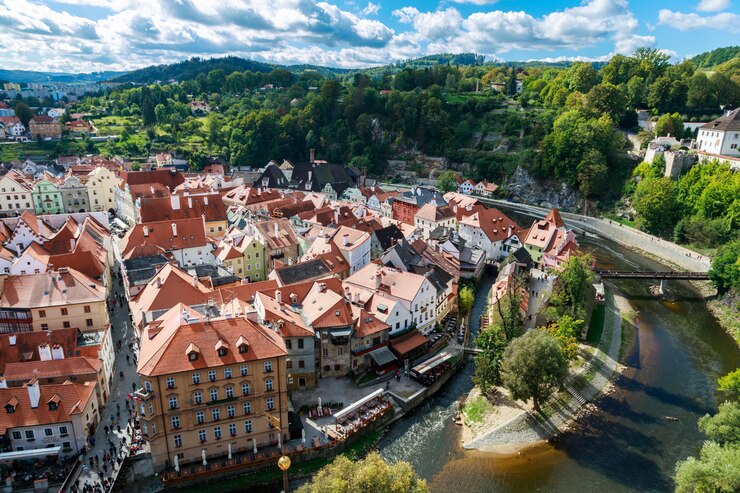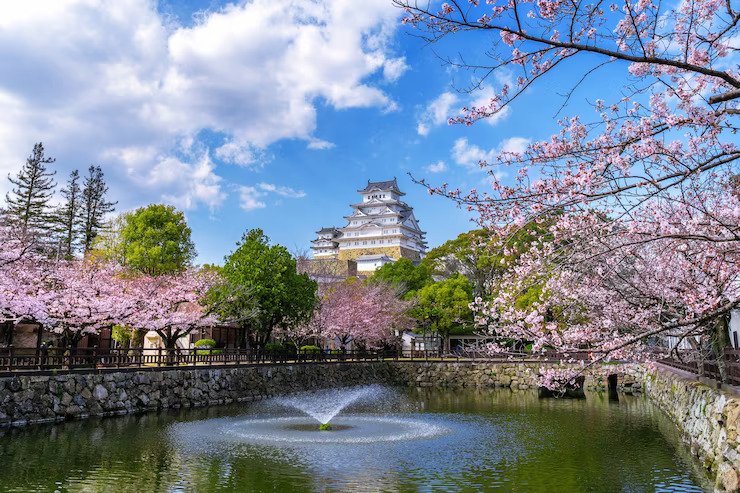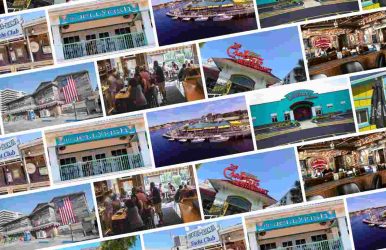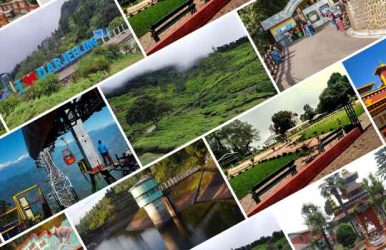Top 12 Perdido Key Restaurants – Reviews & Budget
BY Nabamita Oct 26, 2022
Perdido Key is one of those unincorporated communities in Escambia County, Florida, United States. The place is located between Orange Beach, Alabama, and Pensacola, Florida. The word Perdido means “lost” in Spanish. The area is essentially a narrow land running along a white sand beach and crystal clear water. The beach is perfect for sailing, fishing, and even beachcombing. Here, we have listed the top 12 Perdido key restaurants for you. 12 Perdido Key Restaurants- Must Visit! When you are visiting the beaches of Perdido Key, there are a couple of Perdido Key restaurants that you must visit for delicious food. Here are the restaurants listed down below. 1. Fishermans Corner Seafood Restaurant Though Fishermans Corner does not has an exciting outdoors, the real gem of this place is the food that they serve. The seafood served is fresh from the Gulf of the highest quality. The daily chef's specials are something that is a must-try. Address13486 Perdido Key Dr, Pensacola, FL 32507-9603Contact Info+1 850-791-6914WebsitefishermanscornerpkHoursTuesday to Thursday- 11:00 AM - 8:30 PMFriday to Saturday- 11:00 AM - 9:00 PMSunday- 11:00 AM - 4:00 PMMondays closed MealsLunch, DinnerSpecial DietsGluten Free Options, Vegan Options, and Vegetarian-FriendlyCuisine Cajun & Creole, Seafood and AmericanFeaturesOutdoor seating, Takeout, Parking Available, Seating, Wheelchair Accessible, Accepts Credit Cards, Highchair Available, Table Service Tripadvidor Review: “Absolutely wonderful meal. Our side salads were so fresh. My Grilled shrimp with sautéed squash & zucchini was seasoned so well. Hubby had the fish dinner which happened to be mahi-mahi & he loved it. Go, it’s worth the taste of every bite!” 2. Flora-Bama Yacht Club Amongst the most legendary bars here in Perdido Key Florida restaurants. Both food critics and guests alike are amazed by the wide variety and unique food that they serve. The food and the ambiance with live music and waterfront… it can’t get better than that. Address17350 Perdido Key Dr, Perdido Key, FL 32507-9351Contact Info+1 850-483-6272WebsiteflorabamayachtclubHoursSunday - Thursday - 11:00 AM to 9:00 PMFriday & Saturday - 11:00 AM to 10:00 PM MenuMenuSpecial DietsGluten Free & Vegetarian-FriendlyCuisine Seafood, American & BarFeaturesLocal ingredients, Pet-friendly, House cocktails, Family-friendly Tripadvisor Review: “Our family has been coming to the Flora Bama for years and we are always treated like regulars. Today was no exception- another r great night in the books and Jaime was the best! Flora Bama never disappoints - music, food, and service. 💕” 3. The Jellyfish One of the best places to eat in the whole Perdido Key area. The restaurant was founded in the year 2004. It started as a martini and sushi bar. But the Jellyfish has grown to become one of the most popular fish steak restaurants in the area. Address13700 Perdido Key Dr, Perdido Key, FL 32507-7471Contact Info+1 850-332-6532WebsitethejellyfishbarHoursMonday - Wednesd - 11:00 AM to 9:00 PMSunday & Thursday - 11:00 AM to 10:00 PMFriday & Saturday - 11:00 AM to 02:00 PM MealsLunch, Dinner & Late NightSpecial DietsVegan, Gluten Free & Vegetarian OptionsCuisine American & JapaneseMenufull lunch menu Tripadvisor Review: "The food was amazing! My husband had the broiled oysters and I had fried shrimp. I also had the veggie sushi. The wait staff was very nice and fast with their service. We are from NC and came to Florida for vacation. I give everything 5 stars." 4. Sunset Grille The Sunset Grille is one of the most popular restaurants in Perdido Key, located at the Holiday Harbor Marina. That overlooks the waterways of the Intracoastal, accessible both by car or boat. Address14050 Canal a Way Holiday Harbor Marina, Perdido Key, FL 32507-9655Contact Info+1 850-712-1716WebsitemyholidayharborHoursSunday - Thursday - 11:00 AM - 9:00 PMFriday & Saturday - 11:00 AM - 10:00 PM MealsLunch, DinnerSpecial DietsGluten Free, Vegan & Vegetarian OptionsCuisine Seafood, American & BarFeaturesServes Alcohol, Full Bar, Takeout, Outdoor seating, Parking Available, Table Service, Gift Cards, Highchair Available, Wheelchair Accessible & Seating Tripadvisor Review: “Service wasn’t exceptional, but I blame it on being understaffed. It wasn’t horrendous just some things you come to expect (e.g., we weren’t offered refills until our check came). Food was very good! Views were nice. No wait when we got there! Go check it out!” 5. Lillian’s Pizza This is one of the best pizza places in the area. Lillian’s Pan Pizza is located right in Perdido Key in Pensacola Florida. You are sure to get an exceptional dining experience here with your whole family. Address14514 Perdido Key Dr, Pensacola, FL 32507-9519Contact Info+1 850-492-0131WebsiteWebsite linkHoursMonday - Sunday - 11:00 AM to 10: 00 PM MealsLate Night, Dinner & LunchSpecial DietsVegan Options and Vegetarian-FriendlyCuisinePizza, ItalianMenumenu Tripadvisor Review: “As a local Lilian’s is always one of our go to places for pizza! Our server Amanda H. was accommodating and super friendly. If you’re looking for a chill vibe with good food and delicious bushwackers this is the place to go!” 6. Islander Food Shack If you are looking for Perdido Key restaurants for the best burger, then look no further than Islander Food Shack. Along with the best burger in town, they also have baskets, platters, tacos, and sandwiches. Address13818 Perdido Key Dr, Perdido Key, FL 32507-9505Contact Info+1 850-378-8202WebsiteislanderfoodshackHoursSunday - Thursday - 11:00 AM to 9:00 PMFriday - Saturday - 11:00 AM to 10:00 PM MealsLunch, Dinner & DrinksSpecial DietsGluten Free Options & Vegetarian-FriendlyCuisineSeafood Bar, AmericanMenumenu Tripadvisor Review: “Couldn't get into restaurant located next door b/c of long wait time for our large family group, so we walked over to the little yellow building to see if we could get in. Excellent choice. No waiting. Inside and outside seating. Lots of menu choices for every appetite, adults and kids. Good food, nice and efficient wait staff, casual beach atmosphere. Highly recommend. Thank you.” 7. Shrimp Basket The Shrimp basket consists of all the local favorite seafood dishes such as crab claws, shrimp, and also crawfish. It is one of the more affordable options you can enjoy. Address14600 Perdido Key Dr, Perdido Key, FL 32507-9521Contact Info+1 850-492-1970WebsiteshrimpbasketHoursMonday - Sunday - 11:00 AM to 9:00 PM MealsLunch, Dinner & Late NightCuisine American & SeafoodMenuMenuFeaturesOutdoor seating, Takeout, Parking Available, Highchair Available, Serves Alcohol, Full Bar, Credit Card, Seating. Tripadvisor Review: “Wonderful food, drinks and atmosphere! Most of all, we loved our server, Elizabeth! She’s great at serving, recommendations for food and the yummy drinks.” 8. Flora-Bama Ole River Grill This is the ultimate family-friendly restaurant Perdido Key can offer. It has n amazing view of Orange Beach, along with live music and a great dining experience. Address17400 Perdido Key Dr, Perdido Key, FL 32507-9353Contact Info+1 850-483-6262Websiteflorabamaolerivergrill MealsLunch, DinnerSpecial DietsGluten Free & Vegetarian Options AvailableCuisinePub, Bar, Seafood & AmericanMenuMenuFeaturesServes Alcohol, Live Music, Table Service, Takeout, Free-off street parking, Outdoor Seating. Tripadvisor Review: “Sooooo fun. Great food, great service. The accommodated our large of 12 ladies. Gretchen, our waitress, was the BEST! We took all her recommendations and spot on!” 9. The Original Point Restaurant If you are looking for the best Friday night hang areas, then The Original Point Restaurant near Perdido Key is the best in the local area. Address14340 Innerarity Point Rd, Perdido Key, FL 32507-8438Contact Info+1 850-492-3577HoursTuesday - Thursday - 11:00 AM to 9:00 PM Friday & Saturday - 11:00 AM to 9:00 PMSunday- 12:00 PM to 8:30 PM Monday closed MealsLunch, DinnerCuisineSeafood, Bar & AmericanFeaturesServes Alcohol, Full Bar, Takeout, Seating, Outdoor Seating, Parking Available, Live Music, Table Service. Tripadvisor Review: “We thoroughly enjoyed our meal. My wife had the bay scallops and I had the crab cakes. Both were really, really good. It’s not a place that you might try based on the outside but the food was excellent.” 10. Crab Trap Perdido Key The Crap Trap establishment is a funky and fun place on the Gulf of Mexico. For intimate dinners to casual lunches by the water, it is available here. Address16495 Perdido Key Dr, Perdido Key, FL 32507-9310Contact Info+1 850-492-8888WebsitecrabtrapfloridaHoursMonday - Sunday - 11:00 AM to 9:00 PM MealsLate Night, Lunch & DinnerMenuMenuSpecial DietsGluten Free Options & Vegetarian-FriendlyCuisineBar, Seafood & AmericanFeaturesOutdoor Seating, Takeout, Serves Alcohol, Parking Available, Waterfront, Playground, Beach. Tripadvisor Review: “The food was wonderful!! The crab and shrimp dip was every bit as good as we remembered it!! Chelsey was a great server! Could not have been more helpful and friendly!!” 11. Hub Stacey’s at the Point Having two different establishments, Hub Stacey’s offers the best sandwiches in all of the Perdido Key Restaurants chain. Its’ large portions are not going to disappoint you for sure. Address5851 Galvez Rd, Pensacola, FL 32507-8416Contact Info+1 850-497-0071WebsitehubstaceysHoursSunday - Thursday - 11:00 AM to 9:00 PMFriday & Saturday - 11:00 AM to 10:00 PM MealsDrinks, Lunch, Dinner & Later NightMenuMenusSpecial DietsVegetarian-FriendlyCuisinePub, Bar & AmericanFeaturesOutdoor Seating, Takeout, Parking Available, Serves Alcohol, Full Bar, Live Music, Wheelchair Available Tripadvisor Review: “My husband and I picked up carryout order....burger and chicken salad salad. They were both delicious, but chicken salad was exceptional. Can't wait to get back.” 12. Perdido Key Oyster Bar Restaurant To try the best Oysters in town, try out the best Oyster Bar Restaurant in Perdido Key. Along with all sorts of oyster dishes, they also have sandwiches and a great ambiance for you to enjoy. Address13700 River Rd 13700 River Rd, 32507, Pensacola, Florida, Pensacola, FL 32507-9634Contact Info+1 850-492-5600Websiteoysterbar31HoursMonday - Sunday - 11:00 AM to 9:30 PM MealsBrunch, Lunch, Drinks, Dinner, Late NightMenuMenuSpecial DietsGluten Free Options & Vegetarian-FriendlyCuisineSeafood, Bar & AmericanFeaturesReservations, Takeout, Parking Available, Outdoor Seating, Live Music, Serves Alcohol, Waterfront. Tripadvisor Review: “BEST views. Awesome food! Great service. A MUST when you're near Perdido Key! Our friend had a Perfect Manhattan. He said it was the best he ever had. Our food was delicious. Shrimp and grits, blackened grouper, fried oysters, and even the hamburgers. Fries were excellent as well!” Frequently Asked Questions (FAQs): If you have any other queries regarding Perdido Key restaurants, then here are a few questions that can be helpful to you. 1. What Are The Most Popular Restaurants In Perdido Key? one of the most popular restaurants in Perdido Key are:1. Sunset Grille,2. Flora-Bama Yacht Club,3. The Jellyfish, What Are Some Of The Highly Rated Restaurants In Perdido Key? Some of the highly-rated restaurants here in Perdido Key are:1. Sand Crab Bar2. Jaime’s Local Seafood Shack3. Taqueria El Asador4. The Magnolia5. The Deep Blue Seafood Tru What Are The Best Restaurants In Perdido Key That Provide Takeout? Some of the best restaurants that provide takeout are:1. The Jellyfish2. Sunset Grille3. Flora-Bama Yacht Club Wrapping Up! The Perdido Key Beach in Florida may not be the most popular beach, but it has the best restaurants located there. You will get the best fresh, locally-sourced sea fish and other creatures for their guests. If you find this article stating all the Perdido Key Restaurants helpful, then leave a like and comment down below which restaurant you found the best on the list. Read Also: 10 Best Restaurants On Sanibel Island 7 Restaurants To Dine In With Your Family Best Pet Friendly Hotels Near Me In Florida City













